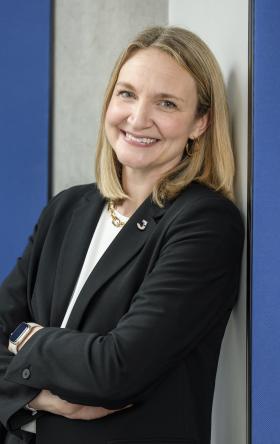Direct Potable Reuse Closes the Loop on the OneWater Cycle
By Melanie Holmer and Larry Schimmoller

Although indirect potable water reuse has been practiced for decades across the U.S. and abroad, significant technological advancements and recent regulatory developments have accelerated the consideration of direct potable reuse (DPR) as a solution to potential shortfalls in utilities’ water supply portfolios. A better understanding of pathogen and chemical types and concentrations present in wastewater has been achieved through extensive research, leading to better design, operations, and monitoring of wastewater and advanced water treatment facilities (AWTFs). DPR provides a direct connection from AWTFs to drinking water plants or potable distribution systems. Thus, DPR closes the loop on the OneWater cycle – from drinking water to wastewater to purified water as a source of drinking water – in a controlled environment that protects public health and safety.
Both Colorado and California recently adopted DPR regulations that have created significant interest from utilities in those states looking to enhance the resiliency of their water supply portfolios. Colorado’s Water Quality Control Commission officially adopted the state’s Direct Potable Reuse Rule on January 14, 2023. Similarly, California’s State Water Resources Control Board officially adopted DPR regulations on December 19, 2023. Protection of public health is paramount in both regulations by carefully controlling potential exposure to pathogens and chemicals. First, an enhanced source control program of the collection system is required to prevent discharge of chemicals to collection systems that could be hazardous to human health and potentially challenging to remove. Second, because wastewater treatment plants (WWTPs) already provide effective removal of pathogens and chemicals when operated properly, monitoring its performance is a regulatory requirement. Third, multiple barriers to pathogens and chemicals are required at the AWTF to ensure that these are removed to an extremely high degree. For example, Colorado requires log reduction requirements at the AWTF of 12, 10, and 10 for viruses, Giardia, and Cryptosoridium, respectively; California requires log reduction requirements of 20, 14, and 15, but removals can be accomplished through a combination of treatment provided at the WWTP, AWTF and drinking water treatment plant (WTP). Due to different geographic conditions, each state has adopted different advanced treatment requirements. California, because of its coastal location and ability to normally discharge brine to the ocean, requires reverse osmosis (RO) treatment as one of its main treatment barriers. Conversely, Colorado, because of its inland location and difficulty in economically disposing of RO brine, specifically developed regulations to allow alternatives to RO-based treatment.
The upcoming WateReuse Symposium in Denver, Colorado from March 11 – 14 provides an excellent venue for learning more about potable reuse, with presentations specifically focused on DPR research, regulations and project implementation. For example, the presentation “Using GAC post RO to Target Low Molecular Weight VOCs” by George Kajjumba with the Southern Nevada Water Authority (SNWA) will present recent research conducted by Los Angeles Department of Water and Power (LADWP), Jacobs and SNWA focusing on granular activated carbon (GAC) treatment to remove low molecular weight chemicals that may pass through RO and advanced oxidation processes.
Melanie and our Jacobs colleague Austa Parker will be moderating the Global Dialogue on Water Reuse roundtable discussion while Tyler Nading and Chandra Mysore are presenting on topics related to PFAS removal in water reuse systems and high-purity water reuse in electric vehicle manufacturing. View the full event schedule for our session details and we look forward to seeing you in Denver.
About the authors

Melanie Holmer recently joined Jacobs as Global Water Reuse Principal and Vice President. An environmental engineer with more than 25 years’ experience, Melanie specializes in strategic planning, process selection, detailed design, program management and technical direction in drinking water, wastewater and water reuse. She’s a recognized leader in potable reuse and advanced treatment technologies, having focused most of the past decade on providing subject matter expertise for major potable reuse projects as well as providing advanced treatment regulatory and policy development and research, including pilot and full-scale trials to support diverse water supply strategies.

Larry Schimmoller is Jacobs’ Global Principal for Water Reuse. He has extensive experience with the design, construction, and operation of potable and non-potable reuse projects throughout the world and has served as the Principal Investigator (PI) or co-PI on numerous research projects focused on water reuse.














































